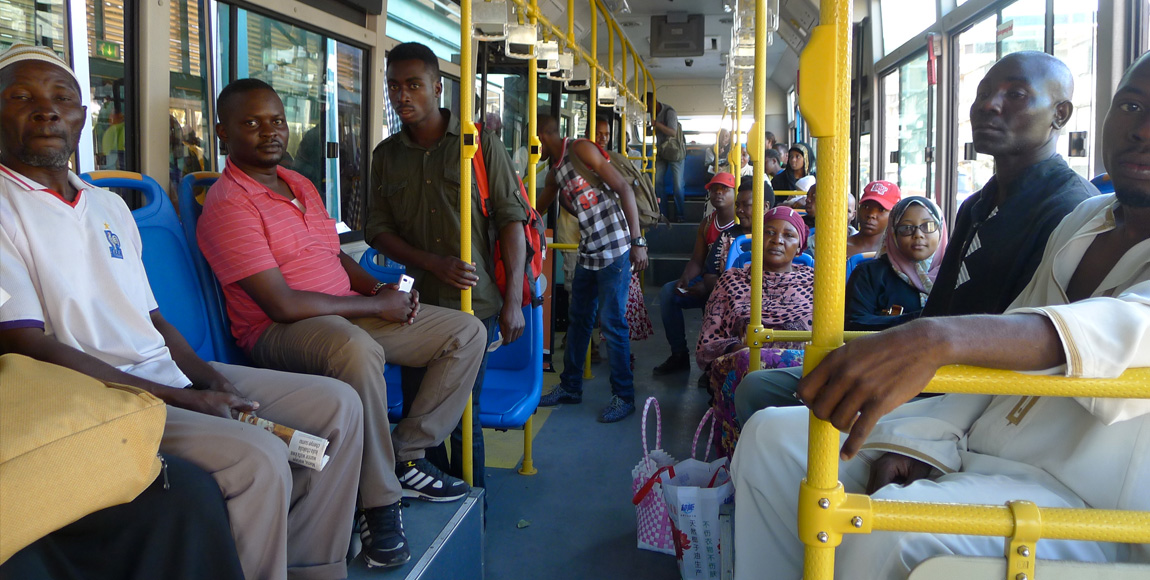Commuter-bus passengers to suffer under rising costs

On Wednesday October 3, the price of diesel rose by 8,6 percent – from R14,40 to R15,64 per litre. The Southern African Bus Operators Association (Saboa) notes that this and other rising costs such as wage increases and industrial strikes, together with low annual subsidy increases, will put the industry under immense cost pressure.
The overall increase in the cost of fuel since September 2017 (R11,71 per litre inland wholesale), year on year, amounts to 34 percent. In tandem, the labour cost increase for 2018 was nine percent.
According to Saboa, a typical bus company’s cost structure is made up as follows:
- Labour cost is at about 40 percent of total operating costs. As labour costs increased by nine percent, it resulted in a 3,6 percent overall rise in total operating costs.
- Fuel represents about 30 percent of total operating costs. Since fuel increased by 34 percent, it resulted in an overall upsurge of 10,2 percent.
- These two cost components alone caused an increase of 13,8 percent in total operating costs.
- The two cost components can explain about 70 percent of a typical bus company’s cost structure.
- The weak rand/dollar exchange rate also significantly negatively affected all new bus purchases, electronics on buses (such as ticket machines and computers), as well as spares and equipment.
Thys Heyns, executive director at Putco, comments: “The price increase of R1,24 per litre of diesel will cost Putco an additional R42 million per annum. This must be seen against the background of the diesel price having already increased by 34 percent since September 2017. The company’s fuel bill has increased by R133 million since September 2017, due to several fuel-price increases.”
John Dammert, corporate affairs and HR executive at Golden Arrow Bus Services (Gabs) adds: “The impact of the diesel-price increase on Gabs will escalate the fuel bill by approximately R37 million per annum.
“Given that the company’s annual usage of diesel is approximately 30-million litres, it is looking at a significant increase in operational costs, as diesel constitutes 30 percent of operating costs.”
Using an example of a bus ticket that costs R10 – which is the operator’s cost to produce the seat – a basic breakdown of the cost increases for the bus company, amounting to 13,8 percent for the year, reveals that:
- The ticket is 50-percent subsidised (R5) and 50 percent (R5) is paid by the passenger.
- The bus company has to earn R1,38 more per ticket sold to cover its costs (a ten percent increase on R10 to cover the 13,8 percent increase in overall costs).
- The Public Transport Operations Grant (the subsidy for the commuter bus industry) increase is 3,2 percent, therefore 0,16 c/ticket (50 percent of the ticket value).
- The passenger increase is six percent, therefore 0,30 c/ticket (50 percent of the ticket value).
- The overall increase is therefore 46 c/ticket – leaving the operator short of 92 c/ticket.
“The impact of the latest fuel increase is devastating to the industry. Most companies have already increased their passenger fares in 2018 and will have major difficulty in doing so again. This is especially so in the light of the very tough financial situation in which many consumers find themselves and the poor performance of the South African economy.
“Yet, bus companies will, in all likelihood, be forced to pass this increase on to passengers as the magnitude of the increase threatens the financial sustainability of companies and their ability to render a service to the commuting public,” Saboa concludes.
Published by
Focus on Transport
focusmagsa




